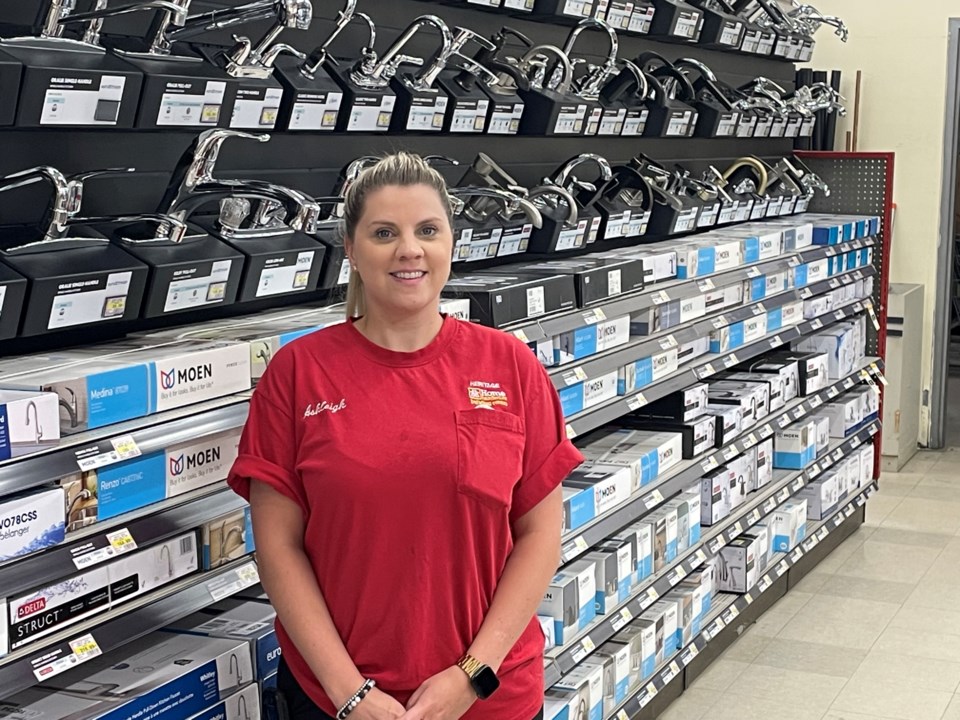Any thermostat allows you to control the temperature in your home, from the heating to ventilation and air conditioning. But with a smart thermostat you can do this remotely through your mobile device and from virtually any location.
There are additional benefits too. It can help you save energy and reduce your home’s heating and cooling costs, maximizing efficiency.
We spoke to Ashleigh from Heritage Home Hardware in Sault Ste. Marie to find out more.
HVAC compatibility
Not every thermostat works with every type of system, so before you start shopping for a brand new smart thermostat, make sure it will be compatible with the HVAC system in your home. Some HVAC systems may even require a smart thermostat from a specific manufacturer. Check the product label or website for compatibility information before making a purchase.
Features
Smart thermostats are sometimes called Wi-Fi thermostats. Prices can vary, depending on the features included and how easily they integrate with any other smart technology your home may already have. Pay close attention to the features offered and choose the ones that will best suit both your home and lifestyle.
Remote control
Not your traditional remote control, your smart thermostat will include a mobile app that allows you to have complete control of the climate in your home, no matter where you might happen to be. If you’re out all day at work in the winter, you can keep the heat low during the day to save energy (and money) and turn it up before you arrive home. You can do the same thing in the summer with your air conditioning.
How does your smart thermostat communicate with your mobile device? Through your home’s existing network hub or your local Wi-Fi network. If the Wi-Fi in your area is spotty, you might want to consider purchasing a range extender or Wi-Fi mesh technology; either of these will improve the signal throughout your home.
Voice control
You might be surprised to learn that all smart thermostats come with a voice control feature now. Most of the newer models are compatible with the most popular voice technologies in use today (Alexa, Siri, Google Assistant), so you can make conversational commands.
Smart response technology
Not only can you program your smart thermostat when you’re far away from home, the technology can respond in a smart fashion too. It can monitor and learn your behaviours, creating a temperature schedule that has been built around your daily patterns.
Once it gets to know you and your preferences, there is even less for you to do as this automated feature basically takes over the job of climate control.
Geofencing
If your smart thermostat includes geofencing technology, it can help you conserve energy by using the location data on your smartphone. How? Your thermostat will automatically adjust the temperature when you are away from home or close to returning.
If you’re a family where different members keeps irregular hours, this can be especially helpful.
Smart alerts and notifications
If there is a sudden change in the temperature in your home, a smart alert will let you know. There could be several reasons for this—such as a door that was inadvertently left ajar, a window that has been broken or a maintenance issue with your HVAC system.
The notifications can be very useful for homeowners. You can set it up to receive reminders, for example, that it’s time to change your furnace filters.
Insight reports
Learn from your family’s patterns, with help from your smart thermostat. It takes in a lot of data, about your consumption, usage and temperature. Armed with this detailed information, you can now better manage both your thermostat and your HVAC equipment.
Smart temperature sensors
If you have an older home, room sensors can help better regulate the temperature and many smart thermostats work seamlessly with them. It’s pretty common for older homes to have inconsistent airflow, with some areas being heated or cooled more efficiently than others.
When you use these room sensors and place them strategically throughout your home, your smart thermostat can use the temperature readings from each room and make adjustments accordingly.
Smart home integration
Of course, if you’re already using other smart home devices it makes sense to look for a smart thermostat that is compatible with your current set-up. That way you can control all of your smart devices from one app, including smart lighting, smart switches and outlets, smart locks and your smart home security system.
Smart thermostat installation
Be sure to look at your existing wiring before you install your smart thermostat. Ashleigh suggests taking a picture of the wiring so you have a visual to refer back to and can see how everything is connected.
Smart thermostats need to be connected to the two standard low-voltage wires, but in order to ensure they have continuous power, they also need to be connected to a common wire, or “c-wire”. Some models may include a power adapter or extender that let you add a c-wire to your system, while others don’t require a c-wire at all.
For more information on selecting the right smart thermostat for your home, visit Heritage Home Hardware or call 705-759-5101.
